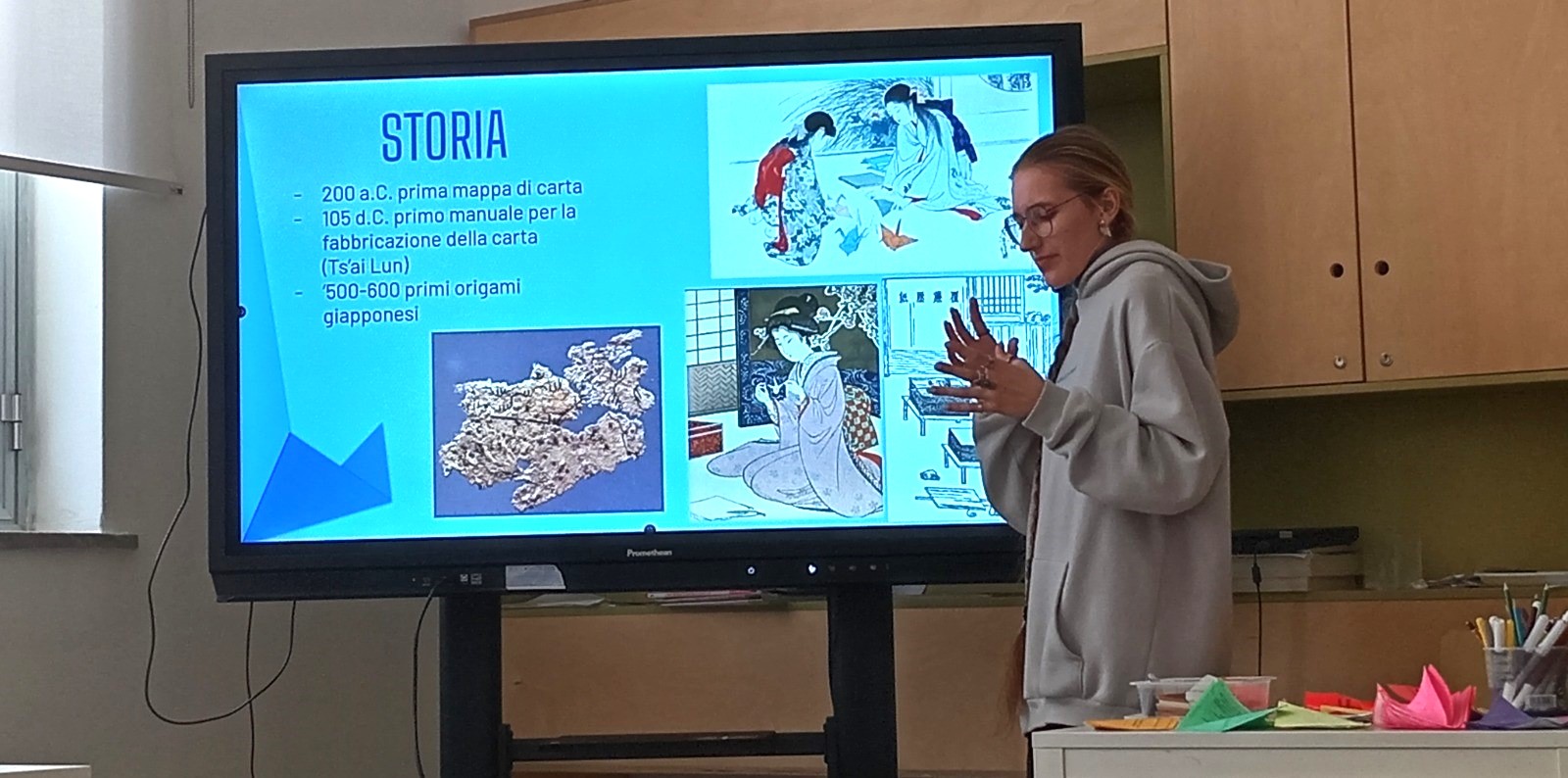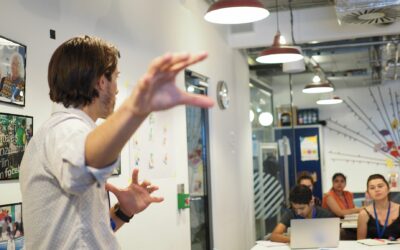Interview with Ellionora Danilova: Crafting Connections Through Origami Workshops
Interview with Ellionora Danilova – Volunteer Educator from Palermo
Hi Elli, can you tell us a little bit why you wanted to propose an origami activity at Base Camp?
It all started when I decided to participate in the RAISE workshop, a CESIE ETS project that from November 2023 to March 2024 gave me the opportunity to learn how to hold a workshop, based on my passions and talents. During those meetings, CESIE ETS’s team offered me the possibility to follow an online course as volunteer educator, and once I finished it they supported me in the process of identifying some ideas that we would like to develop and I decided to propose an origami workshop.
Where does your passion for this type of art come from?
This passion was born by pure chance from the game Tsuki’s Odyssey in which my attention was captured by the Senbazuru curtain made of 1000 origami cranes, a Japanese tradition for the celebration of summer that consists of making 1000 cranes during the year to be able to fulfill a wish at the end. So I tried my hand at this feat and I also started making 1000 cranes during the hours of the day, also to stay awake during the lessons. At the end of the year, I realized how this constant work has helped me a lot to distract myself from using my cell phone and stay more focused in class.

What does it mean to hold a workshop in front of other people? What have you learned and what would you recommend to those who want to undertake the organization of a workshop?
I really enjoyed the first workshop session I conducted, although along the process I felt a lot of anxiety and fear of losing the interest of the participants. It was not easy to be able to mediate between the various groups and at the same time follow the individual participants in the realization of each of the origami steps.
I realized that conducting a workshop for me means sharing, communication and teamwork. You don’t have to do a monologue but you need a lot of collaboration and a lot of courage to get involved without fear of the pressure and anxiety that speaking in front of others in a leadership role entails.
Thanks to the feedback that the participants gave me at the end of the workshop, I understood that when holding a workshop participants’ engagement can be achieved through the sharing of topics that somehow are valuable and close to the people offering the sessions, instead of long theoretical and technical parts.
What kind of interest and participation did you find in those who followed your course?
In the practical part in which everyone tried their hand at making origami, there was a very active participation. The theoretical part, when I explained the applications of origami in science, architecture and design, aroused the interest of the teachers more than of the other participants, for this reason, the final feedback gave me the opportunity to better understand how to structure a future workshop.
Would you like the course to continue? How would you like to structure it?
Yes, I would love to continue teaching other types of origami. For newcomers, I would like to propose the crane workshop again, reducing the theoretical part and dedicating more time to the practical part. I would dedicate a lesson to every single type of origami. I would very much like this workshop to become a permanent fixture for the future. If I find interest in this type of art, I will continue to learn new forms of origami to continue to pass them on.
An important aspect that I would focus on is the usefulness of a daily use of this type of art. I would talk more about how teachers can use the art of origami in everyday life to improve the psycho-motor skills of children and adolescents, in fact in Japan it is taught as early as kindergarten.
I really like teaching others and being a role model in a collaborative way. An idea that came out of this workshop and that fills me with enthusiasm is the possibility of creating paper from magazine scraps and later, using these new recycled sheets to make new origami.

Motivated to join a community of knowledge-sharing enthusiasts and learn how to share your knowledge effectively? Become part of our community and explore our latest course on creating impactful workshops!
- e-VELP ConsortiumImpactful Workshop Planning – Tips and Tricks15 HoursBeginner7 Lessons0 Quizzes25 Students
A step-by-step guide from identifying your valuable knowledge to creating and delivering impactful workshops to...
Free - e-VELP ConsortiumPianificazione di workshop d’impatto – Suggerimenti e trucchi15 HoursBeginner7 Lessons0 Quizzes22 Students
A step-by-step guide from identifying your valuable knowledge to creating and delivering impactful workshops to...
Free


